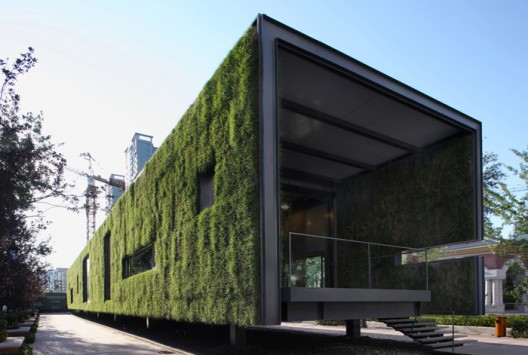Guest writer Jay-Jay Stephens has provided three striking examples of modern green roofs that can be found.
Green Roof Design: 3 Contrasting Examples
We’ve all witnessed the growth in popularity of green roofs in recent years due to their outstanding sustainable qualities. Recent advances in technology have made green roofs lighter and more durable and as a result more able to withstand harsher weather conditions, adding to their wider appeal.
Known for their excellent water retention, green roofs also improve conservation and biodiversity, provide wildlife habitats, improve the thermal insulation of buildings, reduce airborne particulate and lessen the urban heat island effect.
With so much to offer in terms of sustainability there’s little surprise to see so many leading architects using green roofs in their designs to create highly sustainable and very contrasting builds.
CR Land Guanganmen Green Technology Showroom
Location: Beijing, China, Architects: Vector Architecture

Image via Arcdaily
The CR Land Guanganmen Green Technology Showroom was designed by Vector Architecture in 2008 to showcase the sustainable benefits of green roofs to the public. Although only a temporary structure, the building can easily be dismantled and recycled with minimal impact on its surroundings. The structure itself benefits from enhance thermal efficiency and reduced heat loss while the grass panels help to lessen storm water runoff.
California Academy of Science
Location: California, USA, Architects: Renzo Piano

Image via Tim Griffith
Pushing sustainability was at the very heart of this building which will consume as much as 35% less energy required to be granted the LEED certification. The need for internal electrical lighting is significantly reduced as 90 percent of regularly occupied space will benefit from direct sunlight. The roof stretches some 2.5 acres and is home to a number of species which are native to California. The building uses heat recovery systems to reduce the amount of heat energy used and a reverse osmosis humidification systems to maintain a consistent level of humidity which will reduce energy consumption for humidification by 95 percent.
This guest post was provided by Jay-Jay Stephens on behalf of The Stable Company who use green roofs as part of their sustainable approach to designing, manufacturing and installing bespoke timber frame buildings.
[source: http://feeds.importantmedia.org/~r/IM-greenbuildingelements/~3/3gYj9yzmZpM/]

Leave a Reply
You must be logged in to post a comment.